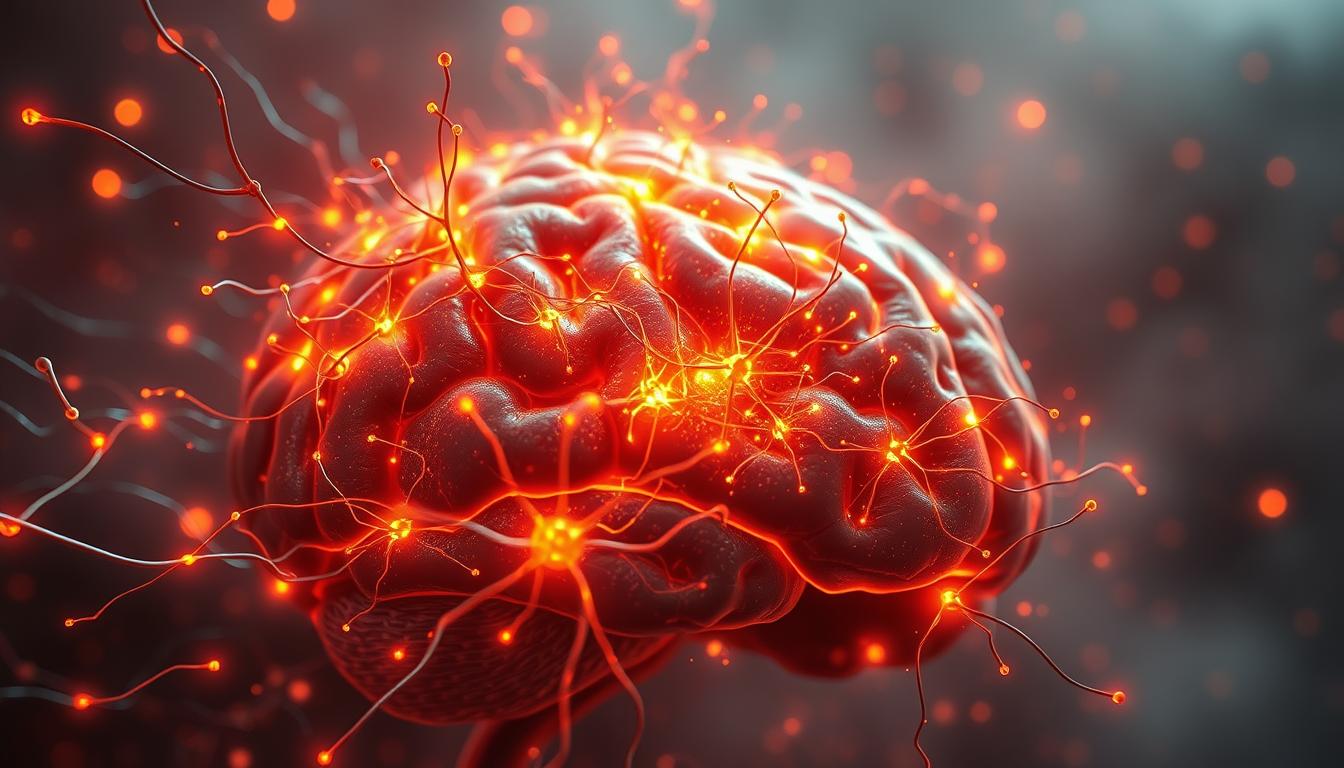Imagine a mental workout that strengthens your focus, calms your body, and even alters your genes. That’s exactly what happens when you practice meditation regularly. Cutting-edge studies reveal that this ancient practice rewires your brain’s circuits, enhancing both mental clarity and physical health. How? It all ties to neuroplasticity—your brain’s ability to adapt and reorganize itself based on experience.
Researchers at Harvard Medical School discovered something groundbreaking. Just minutes of focused breathing can activate genes linked to DNA stability while quieting those tied to inflammation. Using MRI scans, they observed increased activity in areas governing the autonomic nervous system—the part responsible for digestion, heart rate, and blood pressure. This explains why meditators often feel physically relaxed even during stressful moments.
Think of meditation like lifting weights for your mind. Consistent practice strengthens neural pathways tied to emotional regulation and attention. Over time, these changes become visible in brain scans, showing thicker gray matter in regions linked to memory and decision-making. Modern tools now confirm what traditions have taught for centuries: your mind holds transformative power.
Key Takeaways
- Meditation physically changes brain structure through neuroplasticity, improving focus and emotional balance.
- Harvard studies show it activates genes that reduce inflammation within minutes of practice.
- MRI scans prove it boosts activity in areas controlling heart rate, digestion, and blood pressure.
- Regular sessions strengthen neural pathways, similar to how exercise builds muscle.
- These findings bridge ancient practices with modern neuroscience, validating their lasting benefits.
Introduction to Meditation and Its Evolution
Ancient monks didn’t need cushions or timers to find peace—they wove mindfulness into every step. For thousands of years, diverse cultures have shaped these practices, from Tibetan herders maintaining calm in harsh climates to Silicon Valley professionals using them to combat burnout. What began as spiritual rituals now stands validated by MRI scans and gene studies.
Discovering the Origins and Modern Practice
Your journey through this discipline’s history reveals surprising connections. Early Vedic texts describe breath-focused methods over 3,000 years ago. Buddhist monks later refined approaches still used today. People from all walks of life find their own way into these techniques, proving there’s no single “right” approach.
Modern applications show incredible versatility. Nurses use brief sessions between shifts, while athletes employ visualization drills. This flexibility explains why 14% of American adults now engage in mindful techniques—triple the number from 2012.
What You Can Expect from This Ultimate Guide
We’ll unpack how ancient wisdom meets cutting-edge research. You’ll explore:
- Core principles shared across traditions
- Methods fitting various lifestyles
- Neuroscientific explanations for its effects
By the end, you’ll understand why these enduring methods remain relevant—and how to make them work for your life. You’ll gain firsthand experience through actionable examples bridging science and daily living.
Understanding the Science Behind Meditation
Think of your mind as a muscle that needs regular training. Just as lifting weights builds physical strength, focused mental exercises reshape your brain’s capabilities. This section breaks down how intentional thought patterns create measurable changes in cognition and emotional control.
Defining Meditation and Its Core Principles
At its heart, meditation involves focusing your attention on one anchor—like your breath or a repeated phrase. When thoughts drift (and they will), you gently guide your mind back. This cycle of focus-wander-return is where growth happens. Researchers call it “attention muscle development,” proven to boost awareness over time.
| Type | Focus Object | Key Benefit |
|---|---|---|
| Mindfulness | Breath/Body Sensations | Present-moment awareness |
| Transcendental | Mantra Repetition | Deep relaxation |
| Loving-Kindness | Positive Phrases | Emotional resilience |
How Meditation Influences Brain Function
Your brain adapts faster than you think. Studies show that just 8 weeks of daily practice:
- Thickens gray matter in areas linked to focus
- Reduces activity in the amygdala (stress center)
- Strengthens connections between decision-making regions
One MIT study found meditators process distractions 40% faster than non-practitioners. It’s like upgrading your mental filter—you notice interruptions but don’t get stuck on them. This skill spills into daily life, helping you stay calm during chaos.
The Brain’s Transformation Through Meditation
Your brain isn’t fixed—it’s constantly reshaping itself based on your daily habits. Modern imaging reveals how focused mental practices spark structural upgrades and electrical shifts. Let’s explore two key mechanisms driving this remarkable evolution.
Neuroplasticity and Changes in Gray Matter
Consistent practice acts like fertilizer for your neural networks. MRI scans show increased gray matter density in areas governing learning and emotional control. The hippocampus—your memory command center—grows thicker in regular practitioners.
One landmark study found:
- 8 weeks of practice created visible growth in decision-making regions
- Stress-related areas showed reduced activity
- Memory recall improved by 16% compared to non-practitioners
These physical changes explain why you might notice better focus after just three weeks of daily sessions.
Exploring Brain Waves: Alpha, Theta, and Gamma
Your mental state directly influences your brain’s electrical symphony. Here’s how different patterns affect you:
| Wave Type | Mental State | Key Benefit |
|---|---|---|
| Alpha | Calm focus | Reduces anxiety |
| Theta | Deep relaxation | Boosts creativity |
| Gamma | Peak awareness | Enhances problem-solving |
Beta waves—linked to overthinking—decrease during practice. Advanced practitioners show gamma activity levels 30% higher than average. This shift helps maintain clarity during challenging situations.
Your brain’s ability to rewire itself proves that transformation isn’t just possible—it’s measurable. These changes create lasting improvements in how you process emotions and navigate daily stressors.
Practical Benefits of Meditation for Your Brain and Body
Your daily choices shape your brain’s capabilities more than you realize. Research shows how intentional mental practices deliver both instant relief and lifelong upgrades. Let’s explore how these techniques create measurable improvements in how you think, feel, and interact with the world.
Short-Term Effects: Stress Reduction and Improved Focus
One session can kickstart positive changes. A Harvard study found that just 20 minutes of practice:
- Lowers cortisol (stress hormone) by 25%
- Reduces blood pressure within 45 minutes
- Sharpens attention for 3+ hours post-session
“We saw immediate gene expression shifts favoring cellular repair,” notes lead researcher Dr. Sharon Bergquist. This explains why many feel calmer after brief sessions—your body starts healing at the molecular level.
Long-Term Gains: Enhanced Memory and Emotional Regulation
Consistency unlocks deeper transformations. Regular practitioners show:
- 11% thicker gray matter in memory centers
- 40% faster emotional recovery from setbacks
- 15% lower heart attack risk over 5 years
One groundbreaking trial followed heart disease patients practicing daily. After nine months, 78% showed reduced artery plaque—proving mental habits directly impact physical health. These changes compound over time, creating resilience that weathers life’s storms.
Integrating the Science Behind Meditation into Your Daily Life
Building a meditation routine works like compound interest—small daily investments yield exponential returns over time. Studies prove even 10-minute sessions trigger alpha wave increases and anxiety reduction. Start where you are: consistency beats duration in creating lasting neural changes.
Making Mindful Moments Stick
Begin with bite-sized sessions. Research shows 92% of people who start with 5-10 minute practices maintain routines longer than those attempting hour-long sits. Pair your practice with existing habits—try three mindful breaths after brushing your teeth or during coffee breaks.
| Approach | Time Commitment | Key Benefit |
|---|---|---|
| Mindful Breathing | 5-10 minutes | Instant stress relief |
| Walking Meditation | 15 minutes | Body-mind connection |
| Body Scan | 10 minutes | Improved sleep quality |
Distractions? They’re part of the process. “If you’re feeling better afterward, you’re doing it right,” says psychologist Roger Thomson. Notice thoughts without judgment—each return to focus strengthens your mental resilience.
Pair these techniques with activities you already enjoy. Many meditators also combine sessions with journaling or light stretching. Over time, you’ll naturally extend practice periods as benefits become undeniable.
Conclusion
Every moment of stillness you create ripples through your neural pathways, crafting a calmer, sharper you. Decades of research confirm that meditation does more than ease stress—it physically rebuilds your brain’s structure. Studies reveal increased gray matter density and altered brain activity in regions governing memory and emotional control, while calming brain waves like alpha and theta reduce anxiety within weeks.
Regular practice strengthens your mind’s ability to filter distractions, proven by 40% faster recovery from stressful triggers. These changes aren’t temporary—consistent meditation sessions build lasting resilience, improving relationships through heightened empathy and social awareness.
Your journey doesn’t require perfection. Start with five-minute mindful sessions, using breath as your anchor. Over time, you’ll notice clearer thinking and steadier emotions—evidence that your efforts are reshaping how your brain operates. The proof lives in both labs and lived experience: this transformative practice rewires minds from the neurons up.







